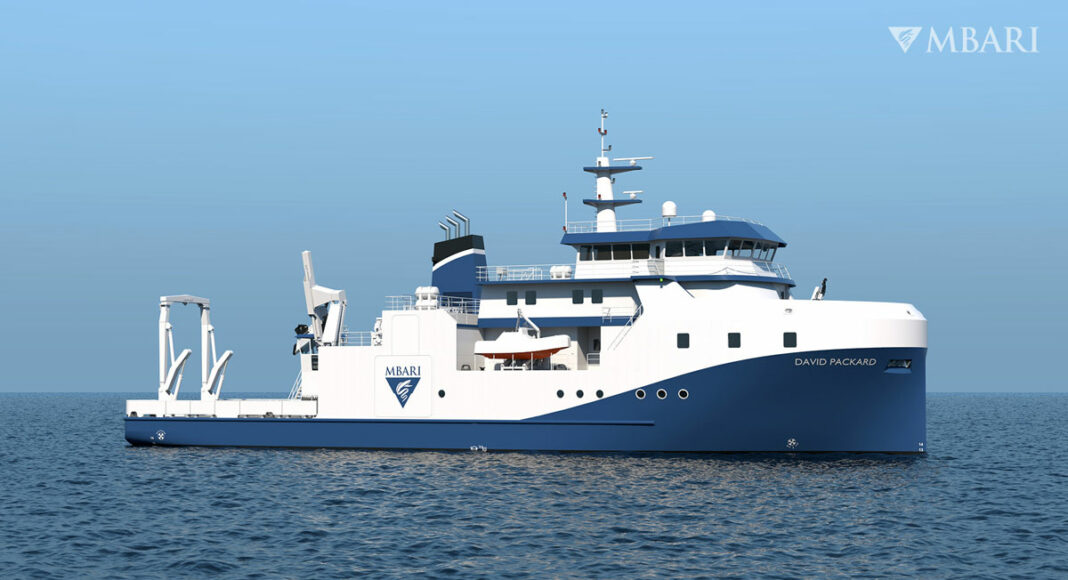The Monterey Bay Aquarium Research Institute (MBARI) will soon have a new, custom-built ship for ocean exploration. The R/V David Packard will replace the institute’s largest vessel, the R/V Western Flyer, in 2023.
David Packard, the co-founder of Hewlett-Packard (HP), funded the creation of the Monterey Bay Aquarium in 1984 and MBARI in 1987. In the decades since, the institution has mapped and explored portions of the Monterey Bay and its underwater canyon in minute detail.
MBARI’s scientists and engineers pay particular attention to the deep sea. They use underwater robots called remotely operated vehicles (ROVs)—which researchers control through a long cable that connects the robot to the ship—and autonomous underwater vehicles (AUVs)—which operate independently of ships on batteries—to study life below the surface.
A sea of possibilities
The Western Flyer has served as the home base and control center for MBARI’s largest ROV for over 25 years. The 117-foot ship has twin hulls that make it exceptionally stable. But that stability comes with tradeoffs.
“It doesn’t have a lot of deck space,” says Michael Kelly, MBARI’s director of marine operations. “It’s really good at being an ROV platform, but it’s not very good at doing other science missions.”

In contrast, the David Packard will have a single hull and be 164 feet long. The more spacious deck will make room for new research capabilities.
“We’re doing a lot more work with autonomous platforms, whether they be undersea vehicles, surface vehicles, aerial vehicles,” says Kelly. AUVs, he explains, can cover large swaths of ocean for long periods of time relatively cheaply.
“The autonomous vehicle frees up the human from doing routine work and really lets them focus on true exploration and discovery,” he says.
MBARI spent the past three decades focusing on the Monterey Bay with occasional ventures into other areas. The David Packard will expand the institute’s reach.
“It ushers in a new age for MBARI,” says Kelly. “This new platform is going to enable us to not only collaborate with other people at other institutions, but actually go to other areas of the ocean that we haven’t gone to before.”
The ship will take shape at Freire Shipyard in Spain before sailing to its new home in Moss Landing.
Kelly expects that the public will eventually have opportunities to tour the vessel—if not physically, certainly virtually.












